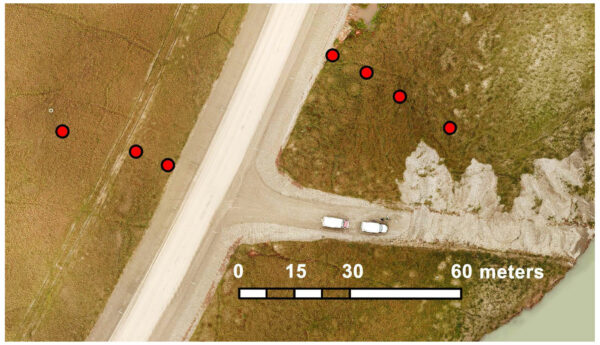
New research from Alaska on how climate change affects things built on or in permafrost — like highways, buildings and underground pipes — shows this type of infrastructure will deteriorate faster than expected.
The study was published in a May paper in the scientific journal The Cryosphere and involved a detailed analysis and computer modeling of data from a section of the Dalton Highway, the supply haul road to Alaska’s oil-rich North Slope.
The study’s authors included Vladimir Romanovsky, a permafrost researcher at the University of Alaska Fairbanks’ Geophysical Institute.
Romanovsky spoke with Alaska Public Media’s Casey Grove about how the work will better inform engineers and planners in the future.
Listen here:
[Sign up for Alaska Public Media’s daily newsletter to get our top stories delivered to your inbox.]
The following transcript was lightly edited for length and clarity.
Vladimir Romanovsky: You can apply this model for larger areas, for example, for the entire North Slope of Alaska, and describe the impact of roads on permafrost — both the impact of roads and also impact of changing climate. So that’s kind of a new thing that make this paper very different from typical engineering calculations for modeling for specific infrastructure.
Casey Grove: If there’s more warming or more effects from the warming than expected, should people be alarmed about things like the pipeline or other highways that might be degrading because of that?
Romanovsky: Well, definitely they should. For a long time, it was the accepted opinion that permafrost on the North Slope of Alaska is cold and stable, and you shouldn’t worry about anything. So this paper shows that it’s not exactly true, even in our present climate — which is of course much warmer than it was 20 or 30 years ago when most of this engineering opinion was formed about the North Slope of Alaska.
This shows that even now, already, the warming of climate is so substantial, that even at some locations, the thawing of permafrost could start around the highways.
Now, another example is the sewer and water pipes in the villages on the North Slope of Alaska along the coast. Again, engineers were under the impression that you can bury these pipelines in the ground, and permafrost will be still stable, and will be okay. But Point Lay right now — it’s a small village on the North Slope — is experiencing huge problems. The problem is that because they followed the recommendations of engineers, they just buried these pipes and now it’s a mess. It’s a huge problem for the village.
Grove: Is one of the lessons from this that you just can’t build that kind of infrastructure in permafrost areas, or that you just have to do it differently?
Romanovsky: Yes, you have to do it differently. The roads — there’s still lots of research is going on right now. But there is still not a kind of universal good recipe for how to build roads on permafrost without impacting it so much that you will have to spend lots of money to maintain the roads and good conditions.
For pipes it’s different. For places like Point Lay where permafrost is very, very ice rich, it is impossible to expect that buried pipelines will continue to function properly. There is no way to do it. The solution that is used in Russia, villages and even in bigger cities on permafrost, is to build all pipes above the ground. Of course, it looks ugly. Of course, it’s aesthetically not great, but it is a solution.
And of course, you still have to spend some energy or some engineering measures to not allow water to freeze. That’s another thing. So you have to do good thermal insulation. In general, there are some engineering solutions, but they may be prohibitively too expensive to use in many cases.
Casey Grove is host of Alaska News Nightly, a general assignment reporter and an editor at Alaska Public Media. Reach him at cgrove@alaskapublic.org. Read more about Casey here.





